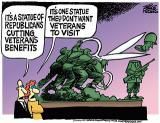If the country, let alone the planet, had listened to us over the past some forty years as to combat trauma and combat PTS, and the country had funded the results of our wars, we would not only have had a better understanding of that but also as to the individual trauma's in the much much larger civilian sectors that have gone under diagnosed or not diagnosed forever, like those in combat and occupation theaters!
Mar 25, 2012 - Jets crashing into buildings. Choking smoke rising against a cloudless sky. Helpless people hurtling to the ground a thousand feet below. Skyscrapers crumbling. A blinding cloud of ash devouring Lower Manhattan.
The vivid images are ingrained in the minds of those who witnessed those horrible events on Sept. 11, 2001. For some, the images conjure feelings of sadness. For others, rage.
But for some who experienced the terror attacks firsthand, reliving the events can invoke a much stronger response, according to a Corning psychologist who witnessed the aftermath of that horrific day.
Dr. Frank Bourke spent months in New York City following 9/11, counseling 800 survivors of the World Trade Center attacks. Some experienced the debilitating symptoms of post-traumatic stress disorder (PTSD).
“It was the hardest I’ve ever been pushed clinically in my life,” Bourke said.
The survivors Bourke counseled were employees of Aon Corp., a multi-purpose company that provides a variety of services, including insurance. Aon had offices on the 92nd and 98th to 105th floors of the South Tower of the WTC.
“Two to three weeks (after the attacks), these people had to get back to work,” Bourke said.
The task was monumental, and countless types of therapy were used to counsel the survivors.
Sometimes, PTSD symptoms – nightmares, flashbacks, panic attacks – can continue for years, but Bourke found one treatment type could alleviate symptoms in a matter of hours. It worked by removing the fear response from a particular memory.
“Reconsolidation of traumatic memories (RTM) was more effective than any other therapy by a factor of 10,” Bourke said. “In two to four hours, I was getting people out of there and back to work.” read more>>>























No comments:
Post a Comment